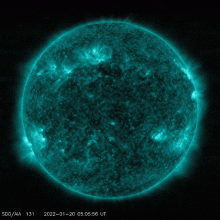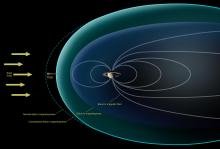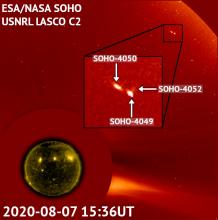Listen to today's episode of StarDate on the web the same day it airs in high-quality streaming audio without any extra ads or announcements. Choose a $8 one-month pass, or listen every day for a year for just $30.
You are here
Solar Minimum
It’s been a quiet couple of years for the Sun. The dark magnetic storms known as sunspots have been rare. Most days last year, in fact, the Sun showed no sunspots at all. And the number of sunspots is expected to stay low for at least a few months more.
The Sun goes through an 11-year cycle of magnetic activity. At a cycle’s peak, sunspots are common, and so are giant outbursts that shower Earth with radiation and charged particles.
The current magnetic cycle reached its peak in 2014. It was especially quiet, though — lower than astronomers had seen in many decades. And since then, solar activity has ramped down even more. The Sun is either in or nearing what’s called solar minimum — the quietest period of an entire cycle.
The Sun’s impact on Earth is at a minimum, too — fewer disruptions to satellites, power grids, and other technologies. And the northern and southern lights are at their puniest.
The reduced solar energy cools the top of Earth’s atmosphere, so the atmosphere shrinks. There’s less air to slow down satellites, so they need fewer rocket firings to keep them on track.
On the other hand, a quieter Sun allows more cosmic rays to enter the solar system. These particles from exploding stars and other sources can also damage satellites, and are hazardous to astronauts — an unpleasant side effect of a quiet Sun.
One satellite is getting close to the Sun this week, and we’ll have more about that tomorrow.
Script by Damond Benningfield





